After Mumbai Indians slumped to their 4th successive defeat this IPL, social media left no stone unturned to make light work of the beleaguered team. The most interesting and hilarious of the case in points is the proposed swap between the Mumbai Indians support staff and players on the field of play. While this started on a lighter note, a closer look at the support staff of all the teams in the IPL does make for an intriguing discussion.Though a majority of these players have never played in the Indian Premier League (IPL) or even T20 cricket for that matter, the calibre, class and aggressive style of play is unquestionable. Today, we present to you a playing XI comprising solely of the support staff of the IPL teams spread over generations of awesomeness.Note: This is a team of ex-players who are currently part of a team’s coaching staff. Ex-coaches-cum-players like Shane Warne and Michael Bevan have not been considered.
#1 Stephen Fleming - CSK
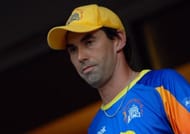
Stephen Fleming wasn’t the most explosive of batsmen and might not have made this XI had someone like Kris Srikkanth, who was Sunrisers Hyderabad’s mentor until last season, been available. However, he had an extremely wise head on his shoulders and knew how to make the best use of his ability.
After playing for Chennai Super Kings in the opening IPL season in 2008, he decided to quit and pursue a coaching career with CSK. It’s safe to say he has been a revelation, with the Super Kings having won two IPL trophies and one Champions League T20 (CL T20), in addition to making the final four on every occasion.
As far as his numbers for New Zealand in what was a 14-year playing career are concerned, he scored over 7000 runs from 111 Tests at an average of 40.06 and also racked up 8037 ODI runs from 280 matches at an average of 32.40.
#2 Gary Kirsten - DD
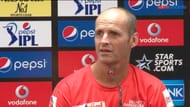
Like Rahul Dravid, Gary Kirsten was not supremely talented but excessively hardworking. Apart from a level head and a wide array of shots, he had the ability and fitness to concentrate for long hours without batting an eye-lid and once he got through the grinding, he cashed in without fail.
Along with Herschelle Gibbs, for near a decade, Kirsten opened the South African innings, finishing with an average of 41 spread over 185 ODIs.
13 centuries and 45 half-centuries in ODIs make for supreme reading for any international player. Add to it the fact that Gary had the highest score ever to be made in a World Cup game (188*) until it was broken by Chris Gayle in the recently concluded edition and you have an opening pair of an out and out basher at one end and a cool and calm head at the other.
#3 Ricky Ponting - MI
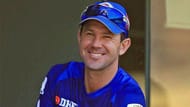
Not much can be said about Ricky Ponting which is unknown to the current generation. When Ponting was on song, he could destroy any bowling attack in the world.
Though there is a school of thought that Ponting never faced the best bowling attack of his generation, another way to present this would be that the best bowling attack of his generation didn’t bowl to the player who perhaps had the best ‘purple patch’ of all time.
After all, Ponting achieved a career rating of 942 in Test Matches and is placed third on the list of the best ever Test Batsmen in the history of the game, merely 19 points below Sir Don Bradman at No.1.
Even in ODIs and T20s, Ponting was a nightmare for bowlers when at his destructive best. His scintillating century in the World Cup finals of 2003 will go down as one of the best innings in a World Cup, if not the best.
When in his pomp, Ponting walking out of the dugout sure was a gulp-down-the-throat prospect for any bowler in the world.
#4 Sachin Tendulkar - MI
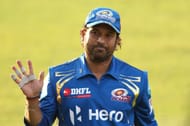
Yeah, for all those wondering, don’t worry, he’s there.
But for a team that is lacking a bit on the power-hitting front, Sachin Tendulkar shifting lower down the order will be ideal.
No, we’re not talking about the 35-year-old Tendulkar who was a part of the IPL. We go 10 years further down the road when merely Tendulkar’s presence gave the likes of Shane Warne sleepless nights. We’re talking about the Tendulkar who danced down the pitch to hit four sixes of Abdul Qadir in an over.
Yes, Tendulkar started out as a bludgeoning batsman before settling down as a grafter in the latter part of his career, an adjustment only a genius of his calibre can make so effortlessly.
For our purposes, however, we chose the Tendulkar of yesteryear, a batsman who would have given the likes of MS Dhoni and Chris Gayle a run for their money.
#5 Jacques Kallis - KKR
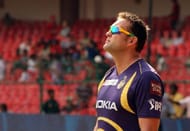
Probably the toughest competition came from VVS Laxman, but Jacques Kallis does and should make the cut over him in all formats of the game. An absolute legend of the game, his presence meant that for over fifteen years, South Africa had the luxury of almost playing an extra player than the opposition.
A player who could easily merit selection on the back of his batting alone, the fitness of this old workhorse even at 40 is quite sensational. For a really long period of time, Kallis handled the fifth bowler department and yet came out to bat up the order – an act that requires an unreal level of fitness.
When he knew his time was up, instead of carrying on as a specialist batsman, he chose to hang up his boots rather than trying to prolong his career for the sake of personal benefit, an act that epitomises team spirit.
At number 5, along with the legend at 6, Kallis can make sure the boat is rock steady before unleashing the flurry of shots that he’s always had in his arsenal.
Interesting note: For someone who is widely considered to be a slow batsman, Kallis actually holds the record for the fastest half-century in Test cricket. As Daryll Cullinan later said, Kallis was an out and out aggressive batsman when he came on the scene. The needs of the team made him adapt his game.
#6 Rahul Dravid (WK) - RR
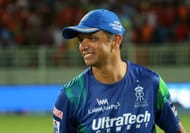
An option between Vijay Dahiya as a specialist keeper and Rahul Dravid as a wicketkeeping batsman was never going to be a competition. When you slump down to 10/2 or 15/3 in any format, the nerves can never be calmer than seeing “The Wall” come out to bat.
If there is any sort of hiccup, major or minor, Rahul can come up the order and provide much-needed solidarity. Else, he can calmly sit in the comforts of his dugout watching on as his team makes light work of the opponent. His ability to understand the game situation and play accordingly cannot be matched by many over the world. Not only this, 3 sixes in 3 balls off Samit Patel and a lightening quick fifty in 22 balls against the Kiwis prove that he can wield the willow to excellent effect when needed.
#7 Daniel Vettori - RCB

Daniel Vettori faced tough competition from Robin Singh and more importantly, Indian legend Anil Kumble, but he ultimately emerged as the prime contender for the spot for two reasons: with 4 extremely attacking bowlers in the side, a miserly bowler like Vettori was the need of the hour along with the fact that with the batting looking a bit shallow, Vettori, who is no mug with the bat, can come in later and play a useful cameo if required.
A bowler with impeccable flight and guile, Vettori is perhaps not even half as good as Kumble when it comes to the longest format. However, knowing his limitations since his debut and playing on green, spin-averse pitches of New Zealand mostly through his career, Dan has done wonderfully well for the Kiwis through the years, holding one end up as wickets tumble from the other.
Probably as a bowler, even in the T20 format, Kumble would have been a better option, but Vettori’s ability with the bat in a team lacking in the department slightly tips the scales in his favour.
#8 Wasim Akram - KKR
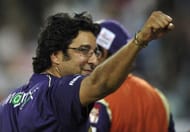
The Sultan of Swing. Enough said.
If you think Lasith Malinga or Mitchell Starc bowl searing, unplayable yorkers better than anyone else, you probably haven’t seen Wasim Akram and Waqar Younis. As soon as it was the 40th over, Wasim and Waqar came into the attack for their last spell and hardly ever gave away more than 60 runs in the last 10, regardless of the opponent’s position up to that point in the game.
When Wasim came running into bowl, the batsman could just not guess whether he would go full and swing it either way, seam the ball from a good length, bowl a ferocious bouncer, a completely deceptive slower one or a toe crushing in-swinging yorker. And such was his control that even if the batsman managed to read him completely, there was still nothing much they could do about it!
It is a shame that Akram never played T20s. For if he had, it would have been massive fun to see him run up against the likes of Chris Gayle and Ab de Villiers. After all, an economy of merely 3.89 after bowling in the death throughout his career is no easy task.
The fact that he is a handy batsman lower down the order doesn’t even come into consideration tells you a bit about the supremacy of his bowling.
#9 Shane Bond - MI
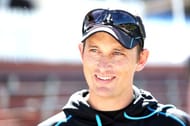
Cricket has its fair share of amazing records, but Shane Bond’s still stands out – he was never wicketless in an innings throughout his Test career.
Bond’s biggest fight was always the one against his fitness. Missing as many matches as he did in his career, Bond would have probably been wiser had he dropped his pace and concentrated more on his line and length as it would have allowed him to play more matches.
But doing this was never Bond’s way. He would be out of action due to injury, come back and try to bowl faster than ever before.
The toe crushing in-swinging yorkers were given a completely new meaning by Bond along with the ability to swing the ball both ways. He was also one of the first bowlers ever to use the slower bouncer so frequently and with such control in international cricket.
It is quite a travesty that even with such supreme ability, he will not be sharing the new ball with Wasim Akram. However, similar to Lasith Malinga, his yorkers and slower bouncers would mean he’s quite unplayable at the death.
#10 Allan Donald - RCB

Unarguably the best fast bowler South Africa have produced till Dale Steyn came into the picture, and arguably the best fast bowler of all time.
When Allan Donald bowled, it seemed like a well-rehearsed symphony in motion. When he released the ball, one could almost sense the crowd standing up and applauding him.
Impeccable in his line and length, Donald would swing the ball a country mile if he so desired. Adept with the away swinging delivery more than the incoming one, Donald would prod away tirelessly and change it up when the batsman lost concentration.
Another example of bowling miserly at the death, Donald ended with a strike rate of 31.4 in ODIs at an economy of merely 4.15.
He gets the nod to share the new ball with Akram over Shane Bond.
#11 Muttiah Muralitharan - SRH
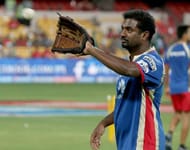
The spin wizard deservedly completes the list. The bowling attack took a long time to be streamlined. The options were to take either Muttiah Muralitharan and Anil Kumble over Murali and Daniel Vettori or even Vettori and Kumble. However, Vettori and Kumble are of a similar mould in that they are not big turners of the ball, leading to a lack of variety. Murali and Kumble, though a seemingly dream-like combination, won’t gel as well as Murali and Vettori in the T20 format.
The other option would have been to rest one of the seamers, but that seemed imprudent, even on the spin-friendly pitches of India.
The highest wicket-taker in both Tests and ODIs, Murali was a revelation in every sense of the word. You would hit Murali for a six, he would smile and flight the ball even more next up, such was the fearlessness and willingness to be hit for runs in his bowling.
For a person with such characteristics, an economy of under 6.4 in T20s is quite unthinkable, especially when coupled with a lowly average of 22.
Check RCB Squad 2024 Details. Follow Sportskeeda for IPL 2024 Live Score, Schedule, Points Table
